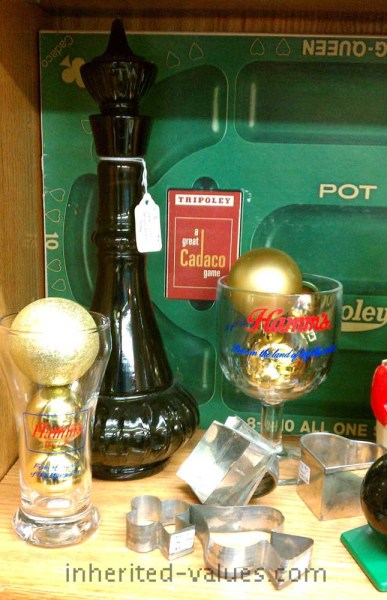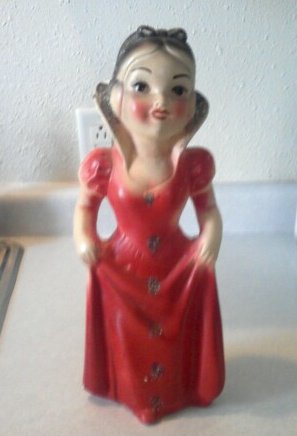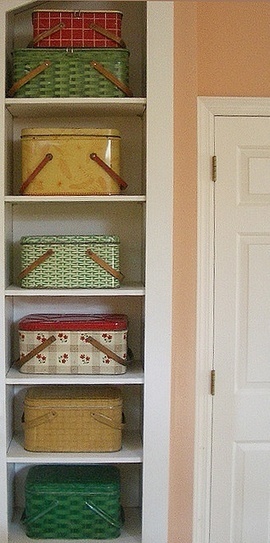Like all collectors, collectors of Halloween items are busy collecting all year ‘round. Unlike most collectors, however, Halloween collectors find discussion and articles about their category of collecting mainly relegated to the month of October only. Here’s is one such article. *wink*
The two most popular categories of vintage and antique Halloween collectibles are postcards and costumes.
The most popular Halloween postcards are from the Golden Age of postcards, which began in the USA with the Private Mailing Card Act of 1898 and lasted until about 1918. While many of these postcards were designed and published in the USA by names such John O. Winsch, International Art Publishing Company, and Raphael Tuck & Sons; the cards themselves were printed in Germany. Superior lithographic techniques combined with inexpensive wages made Germany the place for printing up until WWI. (German printing never quite recovered after the war.)
 The number one reason for collecting antique Halloween or Hallowe’en postcards are for the graphics, of course. There are plenty of jack o’lanterns, black cats, and witches — from comical to scary. As with postcard collecting in general, the hold-to-light postcards and those with fringed borders are among the most rare and sought after. But another area that is quite popular with collectors are the romantic Halloween cards.
The number one reason for collecting antique Halloween or Hallowe’en postcards are for the graphics, of course. There are plenty of jack o’lanterns, black cats, and witches — from comical to scary. As with postcard collecting in general, the hold-to-light postcards and those with fringed borders are among the most rare and sought after. But another area that is quite popular with collectors are the romantic Halloween cards.
Many of these romantic postcards offer the traditional Halloween fare of witches and cats. Sometimes there are simply ladies with icons or symbols of witchcraft, such as cauldrons, clocks, mirrors, and potions. But with these cards it is the messages which are most charm-ing. While some of these old postcards offer sweet sentiments and courtship rituals, others go a step further into the magic of love. Quite obviously directed at young and/or single women, these antique Halloween postcards have a parlor game fortune telling aspect or offer bewitching true love spells.
Halloween costumes are nearly as old as Halloween postcards, however most true antique Halloween costumes were made to be scary — and made to be worn by adults at rather wild carnival-type events featuring drinking and other rowdy behaviors. It wasn’t until the Victorian era that American’s toned the holiday down and focused it mainly on children.
 These early costumes were handmade, rather more like simple theatrical costumes than the pop culture icon costumes we think of today. Some were actually just festive garments featuring holiday colors and decorations.
These early costumes were handmade, rather more like simple theatrical costumes than the pop culture icon costumes we think of today. Some were actually just festive garments featuring holiday colors and decorations.
However, by the late 1930s, with The Great Depression having put many theatres and other live performance events out of business, professional costume companies began to try to save their business by mass-producing Halloween costumes for children. The most famous of these companies, and most popular names in Halloween costumes among collectors, were A.S. Fishbach and Ben Cooper.
Fishbach was the first to secure major licensing rights — and with Walt Disney Company yet. But Cooper Inc. quickly assumed control of Fishbach, and by 1937 was producing Donald Duck, Snow White, and other Disney character costumes under the name Fishbach’s Spotlight brand. By 1942, Fishbach and Cooper would merge and the Fishbach name would be but a footnote in Halloween costume history. The Golden Age of Television would usher in the near death of homemade costumes, and Ben Cooper would capitalize on this by being one of the first to not only license popular TV and film characters but to get costumes on the shelves quickly. This cemented the company’s place as one of the biggest Halloween costume companies.
 The homemade Halloween costumes are more rare; however, those commercial made costumes are often those which inspire more nostalgia and so can be quite pricey. In either case, if you can’t afford to collect vintage or antique Halloween costumes (or simply don’t have the space to display them all), many collectors opt for photographs featuring people in Halloween costumes. These can be far less expensive and take up a lot less room. Plus, there’s a lot of personality in these old snapshots — no two ghosts are quite alike!
The homemade Halloween costumes are more rare; however, those commercial made costumes are often those which inspire more nostalgia and so can be quite pricey. In either case, if you can’t afford to collect vintage or antique Halloween costumes (or simply don’t have the space to display them all), many collectors opt for photographs featuring people in Halloween costumes. These can be far less expensive and take up a lot less room. Plus, there’s a lot of personality in these old snapshots — no two ghosts are quite alike!
Halloween collectors (like collectors of other holiday items) often find shopping for their collectibles is rather limited to the holiday season itself. Like shopping for contemporary holiday merchandise, antique shops (online and off) make a special effort to list and display holiday wares during holiday time. The good news is that you can find sales right after the holiday has passed, just like in most retail shops. And Halloween items for sale “out of season” may be lower priced as well. So if you’re reading this after the holiday, take heart — you can still find great Halloween collectibles, and possibly at a better price too.
Image credits: Bewitching Halloween postcard; vintage homemade Halloween costumes; vintage Halloween photo.






















































